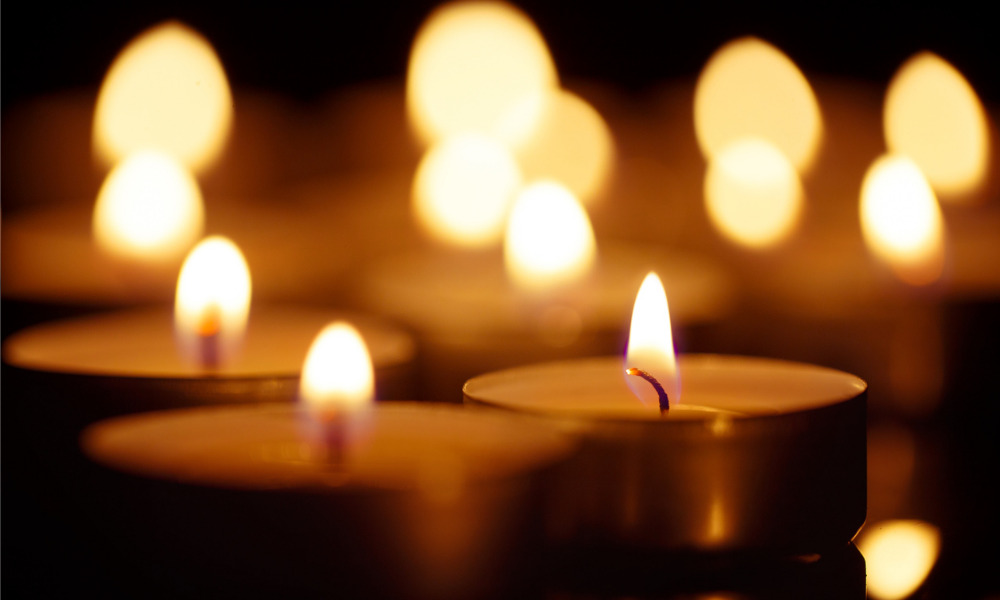Then & Now: The National Day of Mourning. COS looks at the history of this hard and emotional day

Canadian Occupational Safety is celebrating 60 years of publication in 2023. To mark the occasion, we are writing a series of articles that look back on the industries we cover to explore how safety practices have changed over the years.
The National Day of Mourning is an opportunity to harness the power of storytelling to save lives, according to Shirley Hickman, executive director and a founding member of Threads of Life, a not-for-profit organization dedicated to helping families cope with workplace tragedies.
“The power of the true story is that it's totally viable as a method of prevention,” says Hickman. She remembers the very first National Day of Mourning she attended, and shares some of her story on a special episode of the COS Talk podcast.
“1997 was the year after our son Tim had been killed in an industrial explosion, so you can imagine how I was when I attended that ceremony. I was still so raw in grief,” recalls Hickman. But she was moved by the “caring nature of the community” that she found herself surrounded by.
26 years later, Hickman encourages anyone impacted by a workplace tragedy to share their story on April 28.
“To light a candle, to say a name, and to remember and reflect on lives that have been forever changed. You might think it's easy to say a name. But for many people, it's a very difficult challenge to say a name, and yet so important that we remember every life that was lost as a result of a worker going to work.”
Global story with Canadian origin
On April 28, 1984, the National Day of Mourning was established by the Canadian Labour Congress to honour and remember workers who died or suffered illnesses in the workplace. It coincided with the 70th anniversary of the Ontario Workers Compensation Act, the first legislation of its kind in Canada. Eight years later, the federal government, under Prime Minister Brian Mulroney, passed the Workers Mourning Day Act, officially recognizing April 28 as the National Day of Mourning.
Back in the late 1980’s and early 1990’s “it was a fairly understated type of event,” says Anne Tennier, president and CEO of the Canadian Centre for Occupational Health and Safety. But, over time, it slowly grew in recognition, and as worker safety became more of a concern for employers, so too did the importance of remembering and honouring the lives of deceased workers.
On April 28, 2001, the International Labour Organization, a special agency of the United Nations, observed the first Word Day for Safety and Health at Work. A Canadian tradition officially became a global movement to not only remember those who lost their lives, but to also serve as a reminder of the importance of occupational health and safety. The day is now observed in more than 100 countries.
Modern day commemorations
Today, labour councils, unions, employers, government agencies, and many non-profits hold moments of silence at 11:00 hrs, read out the names of the deceased, and reflect on their own role in ensuring every worker goes home at the end of each day.
Federal flags are flown at half-mast, mourners wear black ribbons and armbands, and many share their stories.
Tennier attended her first National Day of Mourning in the early 2000s, and by then she had suffered two separate personal workplace injuries.
“This is just a really important way to honor those who have suffered injuries or illnesses or indeed been killed on the job, but also to reinforce a message of prevention, and making sure that we redouble our efforts to protect workers who go to work every day, sometimes in quite dangerous occupations.”
The CCOHS has this moment of silence video workplaces can share with their employees, or watch together.
Power of sharing
Hickman’s advice to anyone marking the National Day of Mourning for the first time is to bring a friend and a box of Kleenex. “Realize how emotional it’s going to be,” warns Hickman, who also encourages people to embrace the tears.
“Each tear is a warmth of love. I try not to wipe away the tears because those tears remind me of the love we have for Tim. And I encourage our family members to shed those tears, to shed them privately, to shed them publicly, and to honor their tears.”
Hickman also says while it’s important to show respect for the lives lost, it’s equally important to pay respect to those living with loss; the loss of health, the loss of a limb, the loss of a sense. Hickman talks to many workers who suffered life-altering injuries and illnesses and says their grief can be equal to that of someone mourning the loss of a deceased family member.
“That's the message when our family members gather. That's the message that I share. No story is the worst story. Your story, their personal story is the worst story and the only story that they should be focusing on.”
Before, during, and after this National Day of Mourning, share those stories. They could save a life.





